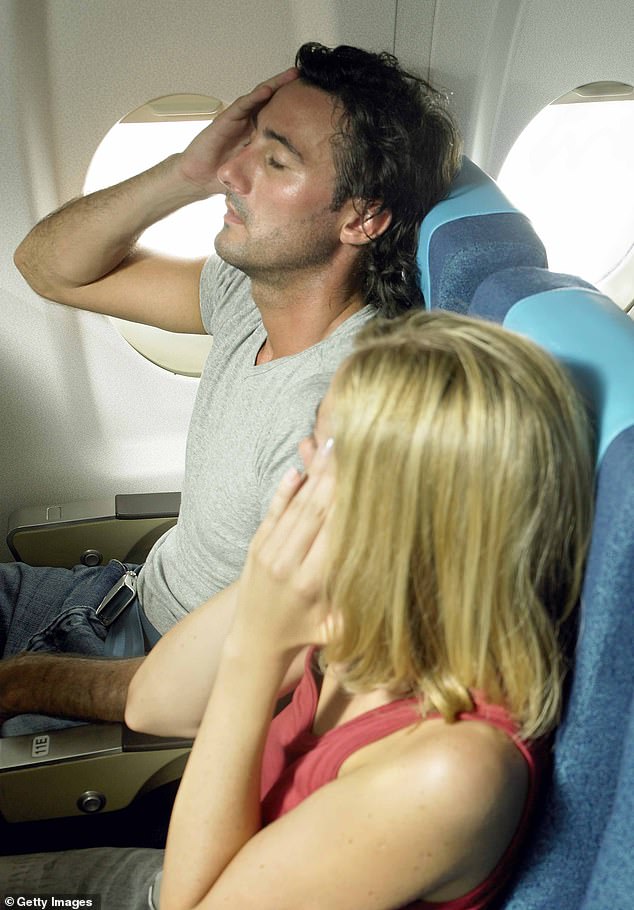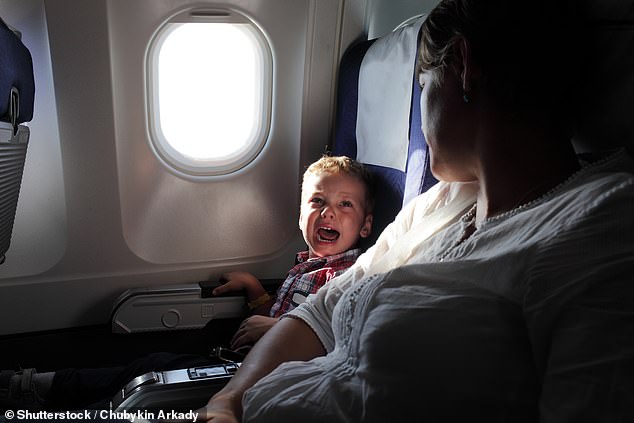A travel expert has revealed how travellers can avoid sitting next to crying babies during flights.
Dawn Morwood, co-director of Cheap Deals Away, a company dedicated to helping people avoid overpaying for holidays, said people have ‘more control over their seating situation than they think’.
She noted that the nightmare scenario – settling in for a peaceful flight, before being disrupted for hours by a crying infant – is all too familiar to many people.
According to Dawn, the unrelenting noise can make rest impossible, and turn a journey into an ‘endurance test’.
She said: ‘Passengers usually don’t realise they have more control over their seating situation than they think.
‘With the right strategies, you can dramatically improve your chances of securing a quieter spot on the plane.’
She then shared some practical tips on strategic seat selection can transform the flying experience.
1. Steer Clear Of Bulkhead Seats

While sitting next to a crying baby can ruin your trip, there are strategies that can be employed to reduce the risk of being near the child (stock image)
Those front-row seats might seem appealing with their extra legroom, but they’re actually baby magnets, according to Dawn.
This is because airlines install bassinets directly on the bulkhead wall, which makes these prime real estate for families with infants.
‘Bulkhead seats are where airlines place bassinets, so families with babies get priority booking for these rows,’ Dawn explained.
‘If you want peace and quiet, avoid the front section entirely.’
2. Master The Seat Map
Most airlines now show detailed seat maps during booking, and savvy travellers can spot potential trouble zones before confirming their selection.
‘Look for baby icons or bassinet symbols on the seat map – they’re your early warning system,’ said Dawn.
‘Some airlines even flag which rows have bassinets installed, so you can steer clear from the start.’

NOISY: Babies and youngsters can ruin the flight for travellers if they are noisy throughout the duration of the trip (stock image)
3. Head To The Back
While passengers often scramble for seats near the front for quicker boarding and disembarking, this strategy can backfire if you’re seeking tranquillity.
Dawn explained: ‘Families usually book early and choose seats near the front for convenience, with easier access to toilets and getting off the plane earlier with all their gear.
‘The rear sections and far sides of wide-body aircraft are usually much quieter.’
4. Fly At Odd Hours
Timing your departure can be just as important as seat selection.
Late-night flights and red-eye departures see significantly fewer families with young children.
‘Parents generally avoid flying with babies during antisocial hours unless absolutely necessary,’ Dawn noted.
‘An 11pm departure or 6am red-eye dramatically reduces your chances of sharing the cabin with crying infants.’
5. Research Adult-Focused Options
Some airlines and aircraft sections cater specifically to adult passengers, though these options are becoming rarer.
‘Certain premium economy sections or specific aircraft configurations limit families with infants,’ said Dawn.
‘It’s worth checking airline policies before booking, as some carriers restrict where families with bassinets can sit.’
Dawn concluded: ‘At the end of the day, smart seat selection is your only real defence if you’re someone who needs peace and quiet during flights.
‘You can’t control other passengers, but you can absolutely control where you sit. I’ve seen too many travellers book the cheapest available seat without thinking about the bigger picture, then spend eight hours miserable because they’re stuck next to a screaming baby.’
She continued: ‘The key is being strategic from the moment you start booking. Take those extra few minutes to study the seat map, consider your departure time, and think about aircraft layout.
‘Yes, you might pay a bit more for a seat towards the back or avoid those tempting bulkhead spots, but the difference in your travel experience is worth every penny.
‘A good night’s sleep or peaceful journey often makes the entire holiday better from day one.’












